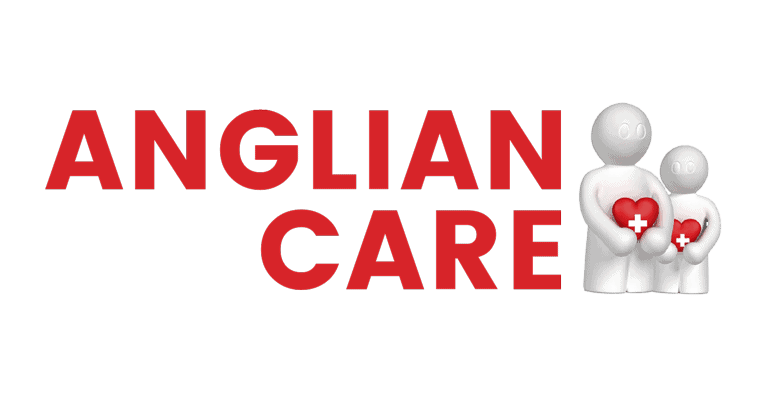Understanding safeguarding in care means recognizing the importance of protecting vulnerable individuals, like the elderly or those with disabilities. It involves principles such as empowerment, prevention, and accountability. All healthcare staff have a responsibility to report any concerns about abuse or neglect, as timely action can prevent harm. Effective safeguarding relies on collaboration among local authorities and community engagement to create support networks. Training is essential to keep staff aware and ready to act. By grasping these concepts, you'll be better equipped to guarantee dignity and safety for those in your care, revealing even more about the subject as you continue.
Definition of Safeguarding
The concept of safeguarding is built on key safeguarding principles, which include empowerment, prevention, proportionality, protection, partnership, and accountability. These principles guide how care is delivered, ensuring that it respects each person's views, wishes, feelings, and beliefs. By focusing on these principles, you help create an environment where individuals feel valued and secure. Additionally, safeguarding is essential for protecting vulnerable populations, such as the elderly and individuals with disabilities, who often face increased risks of abuse and neglect. The importance of safeguarding cannot be overstated, as it plays a fundamental role in maintaining the dignity and safety of those in care. Safeguarding legislation, such as the Care Act 2014, establishes a framework for the protection of those at risk. This legislation mandates that organizations adopt effective safeguarding measures and remain vigilant against potential threats. In fact, during the 2021-22 reporting period, there were over 541,535 safeguarding concerns raised within the NHS. This statistic underscores the ongoing need for awareness and action.
Vulnerable Groups in Care
When you think about vulnerable groups in care, it's important to recognize individuals like children, young people, and adults with various impairments. These individuals often require tailored support to address their unique needs, as they may be at higher risk of harm or neglect. Additionally, understanding the importance of equality and diversity principles in care settings is essential for effectively supporting these groups. By identifying and understanding these vulnerable individuals, you can help guarantee they receive the protection and care they deserve.
Identifying Vulnerable Individuals
During the 2021-22 period, around 541,535 safeguarding concerns were raised in the NHS, showcasing the prevalence of these vulnerable individuals in healthcare settings. It's essential to understand that vulnerability can stem from multiple risk factors, and recognizing these factors is important for effective safeguarding.
Assessing risk involves being aware of the unique characteristics and needs of vulnerable groups. All healthcare staff should be trained to identify signs of potential harm, ensuring that these individuals receive appropriate care and protection. By prioritizing the identification of vulnerable individuals, you contribute greatly to creating a safer environment for everyone in care. Your awareness and actions can make a difference in their lives.
Support for At-Risk Groups
- Community Engagement: Involving local communities fosters a network of support and awareness.
- Preventive Measures: Proactive steps can help identify risks before they escalate into serious concerns.
- Risk Assessment: Regular evaluations help determine the needs of individuals who can't protect themselves.
- Collaboration: Local authorities must work together to implement safeguarding measures effectively.
The Care Act 2014 emphasizes these principles, ensuring that safeguarding efforts reach everyone who needs them. With over 541,000 safeguarding concerns raised in the UK in the last year alone, it's clear that vigilance and proactive support are critical. By prioritizing the needs of vulnerable groups, you can contribute to a safer environment that promotes their well-being. Remember, every action counts when it comes to safeguarding those at risk, so stay informed and engaged in your community's efforts.
Responsibilities of Healthcare Staff
When it comes to safeguarding in healthcare, you and your colleagues share an essential responsibility for protecting vulnerable individuals. It's imperative that you receive proper training and stay aware of safeguarding measures, so you can identify and report any concerns about abuse or neglect. Understanding the importance of confidentiality in care is fundamental, as it helps build trust with service users and encourages them to disclose sensitive information. By working together and communicating effectively, you can guarantee a safer environment for everyone in your care.
Shared Accountability in Care
- Universal Duty: All healthcare workers, regardless of the setting, are legally required to prioritize safeguarding.
- Reporting Concerns: If you notice any signs of abuse or neglect, it's your duty to report these concerns promptly.
- Collaborative Efforts: Working alongside other agencies guarantees a well-rounded approach to safeguarding, meeting the needs of those you care for.
- Ongoing Training: Staying informed about safeguarding issues equips you to recognize and respond effectively.
Training and Awareness Importance
The effectiveness of safeguarding training directly impacts your ability to respond appropriately to potential harm. Continuous training keeps you updated on safeguarding strategies and reinforces your ethical and legal obligations to report concerns.
Here's a quick overview of key elements in safeguarding training:
| Key Element | Description | Importance |
|---|---|---|
| Knowledge of Abuse Types | Understand physical, emotional, financial abuse | Identify and respond effectively |
| Tailored Training | NHS eLearning courses for child and adult care | Meet specific needs of vulnerable groups |
| Confidence Building | Empower staff through thorough training | Enhance ability to address issues |
Reporting Abuse Procedures
- Document the incident: Write down what you see or hear, including dates and times.
- Know your contacts: Familiarize yourself with the safeguarding leads in your organization and local authorities.
- Report promptly: Share your concerns as soon as possible to minimize harm; delays can worsen the situation.
- Stay informed: Attend regular safeguarding training to refresh your knowledge about reporting procedures and local protocols.
Your role in incident documentation is crucial. It provides a clear record that can help authorities understand what happened. Be aware of the reporting timelines set by your organization, as immediate action can lead to faster intervention. Remember, you have both a legal and ethical duty to report any signs of abuse or neglect. By acting swiftly and decisively, you can protect those who may not be able to protect themselves. Together, we can create a safer environment for everyone in care.
Safeguarding Framework and Partners
To be effective, safeguarding efforts must involve collaboration with trusted partners, including local authorities and health organizations. By working together, these partners can create collaborative strategies that address the diverse needs of at-risk populations, particularly unpaid carers as recognized in the Carers Act 2014. Multiple workstreams within the framework focus on integrating services and providing extensive support to those who need it most.
The framework highlights the importance of early identification and intervention. This proactive approach prevents harm and abuse before it occurs, allowing caregivers to act swiftly when concerns arise. In addition, the continuous evaluation of safeguarding practices enhances transparency and accountability. Mechanisms are in place to gather feedback from everyone involved in the safeguarding process, ensuring that every voice is heard and valued.
Reporting and Support Mechanisms
- Identify the Signs: Recognize the signs of abuse or neglect, such as unexplained injuries or changes in behavior.
- Know the Reporting Channels: Familiarize yourself with local authorities and safeguarding boards that provide clear guidelines on how to report your concerns.
- Reach Out for Help: Contact safeguarding authorities directly. Resources and guidance are available to assist you in this process.
- Encourage Community Involvement: Engage with your community to foster awareness about safeguarding measures, promoting a culture of vigilance.
It's essential to understand that both the public and health or social care service employees can initiate reporting. This collective effort fosters accountability in care settings. Local authorities and safeguarding boards guarantee a structured approach to handling these reports, allowing for timely intervention when concerns arise.
Legal Aspects of Safeguarding
Local authorities play an essential role in this legal framework. They are mandated to conduct inquiries whenever there's a reasonable belief that someone is at risk. This process aims to assess the person's protection needs while considering their individual wishes. Additionally, every local authority must establish a Safeguarding Adults Board, which oversees safeguarding practices and guarantees accountability among local services and agencies.
Legislation such as the Human Rights Act 1998 and the Safeguarding Vulnerable Groups Act 2006 further strengthens the legal foundation for safeguarding adults and children in the UK. These laws help to create safeguarding policies that guide care providers in their actions and decisions.





